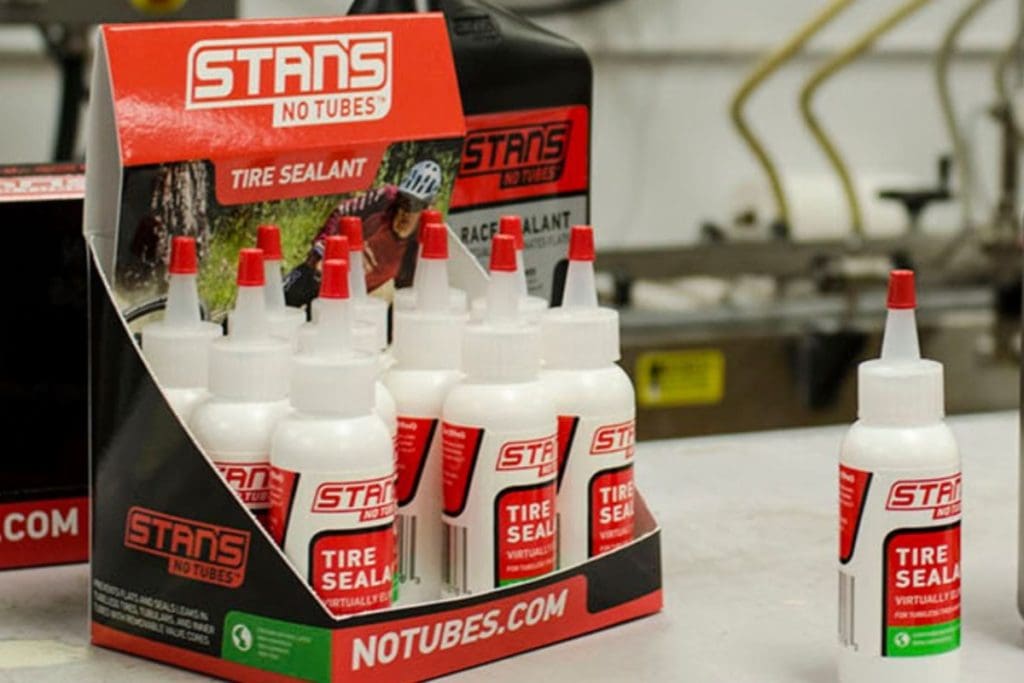Beware of Higher Prices!

By Marc Sani
Recently, I flatted while on a mountain bike ride in a rugged section of terrain some five kilometres from the trailhead. No serious mountain biker riding on tubeless tires rides without at least two key items—a spare inner tube and a 50 gram container of Stan’s tire sealant. It took only a few minutes, but an injection of sealant, a spurt of air, and I was back on the bike.
Later, I went to Bike N Sport, a local shop, to pick up a couple of replacement containers. Four bucks each! (A$5.20) Ouch.
My old container, bought a year or so earlier, still had a sticker price of US$2.99 (A$3.90). That small replacement bottle saw a 34 percent increase in price over the last 12 months or so. A quick check on Amazon had them priced at US$3.75 (A$4.87) each.
That’s just a small example of what’s occurring at retail today and what will continue at least through the rest of 2021 and into 2022 before pricing could level off.
As for traditional springtime discount sales, it’s as if they had never existed. As to why? Limited to near non-existent bicycle inventory, except perhaps road bikes, in many U.S.A. stores. As for e-MTBs, supplies are tight and consumers can expect to wait if they want a particular model.
For the most part, early season bicycle sales drive accessory sales for shoes, helmets, pedals and more. And at the moment selection for add-on sales is generally slimmer than normal. And that also keeps prices high. But as dealers routinely say today, “If I had more, I’d sell more.”
Still, goods are flying off websites and out of retail establishments when available. Consumers are flexing their credit cards and starting to relax. As the pandemic eases, consumer demand for all things, especially travel, abetted by massive federal stimulus, is in turn bolstering business recovery and, for the moment, fueling what economists hope will only be a temporary spurt in inflationary pricing.
But like most things in life, nothing is quite so simple. And the U.S. bicycle market is a case in point. Depending upon inventory and price points on bikes, components and accessories, consumers will see as much as a 20 percent price increase overall this year. In fact, most of that increase is already baked in, so the question becomes will the cake keep rising?
Preston Martin, president and CEO of BTI, an aggressive regional bicycle parts distributor, told me that IBDs seeking parts and components who are aggressive and follow distributor product flow find themselves competing with online sellers in almost every product category. And that competition for limited supply is helping to keep prices high, along with other factors such as massive supply chain disruption in a global industry, soaring overseas freight rates and burgeoning sales in Europe, just to name a few.
For example, the rate for a forty-foot container from China to U.S. West Coast ports is around US$5,650 (A$7,337), according to the Freightos Baltic Index. That’s up 35 percent since January. And sailing time from Shanghai to Los Angeles is pushing 33 days, up from a normal of 14 days, as ships idle at ports waiting to unload. Some reports indicate port delays are easing.
Currently we know a couple of things about the high-value retail side of the industry: demand is high, prices are up, and supplies are tight. But looking out a year to two, how will price elasticity—or lack of it—impact future demand?
Will bicycle prices come down or will the industry resort to its tried, and mostly true tactic of maintaining pricing but down spec’ing components? Will consumers who already own IBD-level bikes but who may want to upgrade to an e-MTB, e-commuter or e-road bike step up and buy them?
Or given the current high prices at retail for most bikes, will consumers hold off and wait for prices to decline (think spring sales), or will they seek substitute products or other activities with their money concluding that what they own is good enough?
For example, would an American consumer rather spend a bit over US$4,000 (A$5,200) for a Vespa Sprint motor scooter or US$3,600 (A$4,675) for a Trek Vale Go ebike? While that example may seem extreme, as prices for bicycles and accessories remain high with relatively inelastic pricing, demand could falter. That in turn has, in the past, left suppliers and retailers with excess inventory sparking sell-offs that erode margins and profits at all levels.
Still, there are some positive factors as consumers look to future purchases. Environmental concerns could keep demand high in some categories. Among affluent consumers, the cost of an e-MTB, for example, is only a sliver of their annual income. And for brand loyalists higher prices may have little impact on buying decisions.
But as average consumers look to buy a new bike for themselves or their family, price is a consideration, particularly at the IBD level. And that’s a market segment of consumers the industry needs to build, but it’s one that reacts sharply to inelastic pricing.
Join the Conversation: Demand is up, supply is tight, have you changed your price point strategy for products that you have limited stock?
